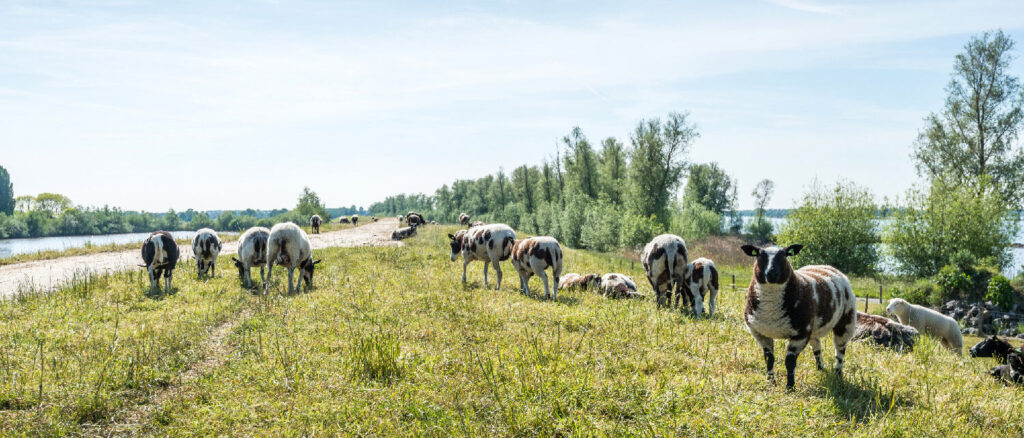4 What is organic/alternative livestock?
The National Organic Program (NOP) and the National Organic Standards Board (NOSB) define organic agriculture as a production systems approach that seeks to understand how all the parts of the system work together. Organic farmers consider how soil, water, plants, animals, insects, bacteria, fungi, and all other parts of the system interact to promote production and wholesome food products. Organic/alternative (O/A) farmers use various approaches, including:
-
- Cultural (e.g., raising breeds of livestock that are adapted to the farm’s climate),
- Biological (e.g., maintaining a dense pasture to prevent weed growth and rotational grazing with multiple species to reduce internal parasite problems), and
- Mechanical (e.g., clipping weeds before they can go to seed in pasture).
Organic agriculture is based on the principle of sustainability – meeting current needs without jeopardizing the ability of future generations to meet their needs (Coffey & Baier, 2012).
According to the , organic food must be produced without using conventional pesticides, petroleum-based fertilizers, sewage sludge-based fertilizers, herbicides, genetic engineering (biotechnology), antibiotics, growth hormones, or irradiation (CFR 205.105). Animals raised on an organic operation must meet animal health and welfare standards, not be fed antibiotics or growth hormones, be fed 100-percent organic feed, and be provided access to the outdoors (Coffee and Baier 2012) (CFR 205.236 through 205.240). The oversees the NOP by certification of farmers who wish to become certified organic and carry the organic label. They establish a list of allowed and prohibited substances used in organic livestock, accredit the certifiers, require organic processing of carcasses, record-keeping, and regular re-certification. It is a land requirement to have no prohibited substances applied for 3 years preceding the harvest of a crop Code of Federal Regulation-National Organic Program.
 It is a 3-year process for a farm to become certified organic. During that time, farmers who cannot sell as organic are called “transitional” (Coffey & Baier, 2012). However, some land may be eligible for organic certification right away. This would include Conservation Reserve Program (CRP) ground or hay/grass that has had no prohibited inputs. We will go into more detail about the certification process in the coming chapters.
It is a 3-year process for a farm to become certified organic. During that time, farmers who cannot sell as organic are called “transitional” (Coffey & Baier, 2012). However, some land may be eligible for organic certification right away. This would include Conservation Reserve Program (CRP) ground or hay/grass that has had no prohibited inputs. We will go into more detail about the certification process in the coming chapters.

What do we mean by organic/alternative livestock?
When we say certified organic, we are talking about those farms certified by the USDA to carry the organic label described above. All other labels or claims that include the use or non-use of antibiotics, pesticides, and will be designated in these pages as ““. The term “alternative” also includes farms that may not seek USDA organic certification due to the heavy regulation and requirements to become certified but may, in fact, practice non-use of antibiotics, pesticides, etc. Farms that are in the process of USDA organic certification but are not yet certified are called “transitional” and, for our purposes, are included under the term “alternative.” Together we will call these groups of producers organic/alternative (O/A).
United State Department of Agriculture’s National Organic Program
United States Department of Agriculture
when a non-mainstream approach is used in place of conventional medicine

